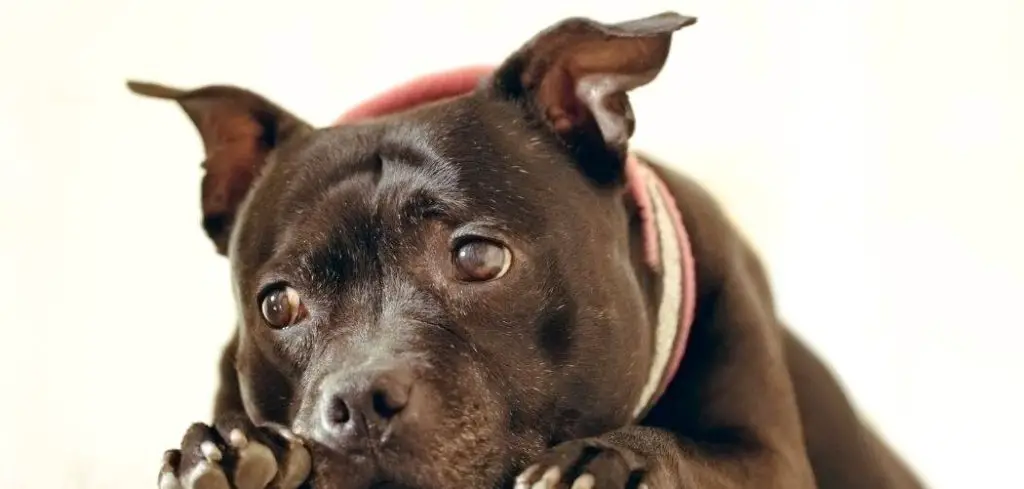If your dog is lethargic not eating not pooping, it can feel like a triple red flag. These symptoms together often indicate something is interfering with your dog’s digestive or overall system.
This combination of sluggishness, appetite loss, and lack of bowel movement shouldn’t be brushed off.
We outline what might be causing this, what you can do at home, and when it’s time to get professional help.
Dog Lethargic Not Eating Not Pooping: Why It Happens
When your dog is lethargic not eating not pooping, the most common causes include constipation, gastrointestinal blockage, stress, pain, dehydration, or serious issues like pancreatitis or infection. These symptoms may stem from the digestive system itself or be part of a broader health problem.

Dog Lethargic Not Eating Not Pooping: Common Causes
Constipation
One of the most common reasons a dog is not pooping is constipation. This can occur due to:
Low fiber intake
Dehydration
Lack of exercise
Ingesting indigestible items like hair, bone, or toys
Constipated dogs may strain to defecate or pass small, hard stools. The discomfort can also make them lethargic and less interested in food.
If constipation continues for more than 48 hours, veterinary intervention may be needed to prevent a more serious backup or obstruction.
Gastrointestinal Obstruction
A GI obstruction occurs when something blocks the intestinal tract, preventing food and stool from moving through.
Dogs that swallow toys, bones, or socks are at risk.
Signs include:
Vomiting or dry heaving
No bowel movements
Bloating or pain when touched
Severe lethargy and refusal to eat
This is a medical emergency. If untreated, obstructions can cause tissue death and sepsis. X-rays and surgery may be required to remove the blockage.
Related: My dog is lethargic and not eating (Causes and when to worry)
Pain or Orthopedic Issues
Pain, especially from the hips or back, can make dogs avoid the straining motion needed to poop.
They may also resist going outside or holding a squatting position.
This kind of pain may be caused by:
Arthritis
Disc disease
Joint injuries
Your dog might still be drinking water but avoid eating and appear stiff or reluctant to move.
A vet exam can help determine if pain relief or physical therapy is needed.
Stress or Anxiety
Changes in routine, a new home, or being in an unfamiliar environment can lead to digestive slowdown in dogs. Stress often causes:
Skipped meals
Inactivity
Delayed or skipped bowel movements
While mild stress-related symptoms often resolve in a day or two, long-term stress can lead to chronic GI issues.
Try to identify and reduce the stressors in your dog’s environment.
Pancreatitis
Pancreatitis is inflammation of the pancreas and often presents with symptoms like:
Abdominal pain
Vomiting
Lethargy
Refusal to eat
Lack of stool output
This condition can cause the intestines to stop moving properly (ileus), leading to constipation or the appearance of not pooping.
Prompt veterinary care, a bland diet, and sometimes hospitalization are needed.
Dehydration
Water is essential for healthy digestion. If your dog hasn’t been drinking enough water, their stool can become dry and difficult to pass. Dehydration also leads to:
Low energy
Dry gums
Loss of appetite
Check your dog’s hydration by gently lifting the skin on the back of their neck—it should snap back quickly. If it stays tented, they’re likely dehydrated.
Internal Illness or Infection
Infections or diseases that affect internal organs like the liver or kidneys can slow digestion and reduce energy.
Dogs may eat less, eliminate less, and appear tired or withdrawn.
Other signs may include:
Yellowing of the gums or eyes
Vomiting
Changes in urination
Blood tests and imaging can help diagnose these deeper issues, which require veterinary care.
What to Do If Your Dog Is Lethargic, Not Eating, and Not Pooping
If your dog is showing these symptoms, here are a few things you can do at home:
Encourage hydration – Offer fresh water frequently. Try ice cubes or low-sodium broth.
Walk them gently – Movement can stimulate bowel activity.
Check for stool attempts – Observe if your dog is straining or avoiding postures.
Offer a small, bland meal – Plain cooked pumpkin (not pie filling) can help relieve mild constipation.
Do not give laxatives or human medications – These can worsen the issue or cause toxicity in dogs.
Monitor closely for any worsening of symptoms, especially signs of vomiting, bloating, or abdominal discomfort.
When to Call or Visit Your Vet
Contact your vet if:
Your dog hasn’t pooped in over 48 hours
They show signs of pain or bloating
Vomiting or dry heaving is present
Lethargy and loss of appetite last more than a day
You suspect they ate something foreign
A full physical exam, x-rays, or an ultrasound may be required to rule out blockages or internal illness. Early intervention is key to preventing complications.
Related: My dog is drooling and lethargic (Here’s why)
Key Takeaway
A dog that is lethargic not eating not pooping could be experiencing anything from simple constipation to a life-threatening intestinal blockage.
While some cases resolve with hydration and rest, others require urgent veterinary care.
Monitor your dog closely and trust your instincts—if their behavior doesn’t improve within a day or two, don’t wait.
Getting timely help can protect your dog from serious complications and ensure they’re back to wagging their tail in no time.
